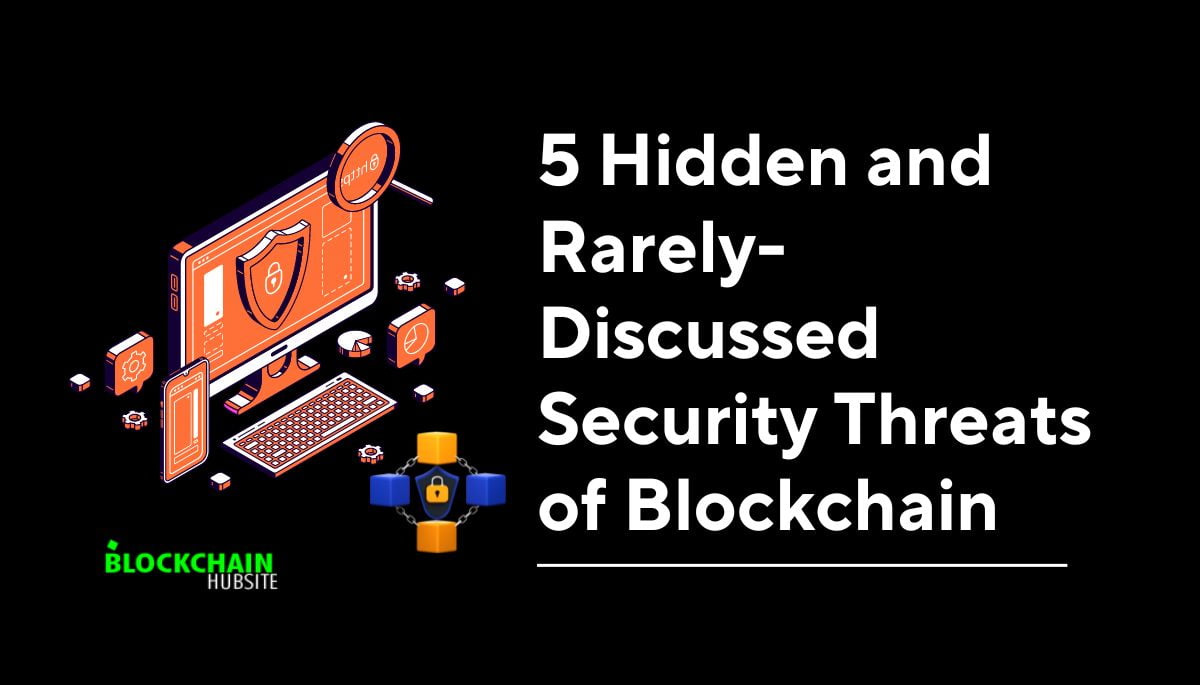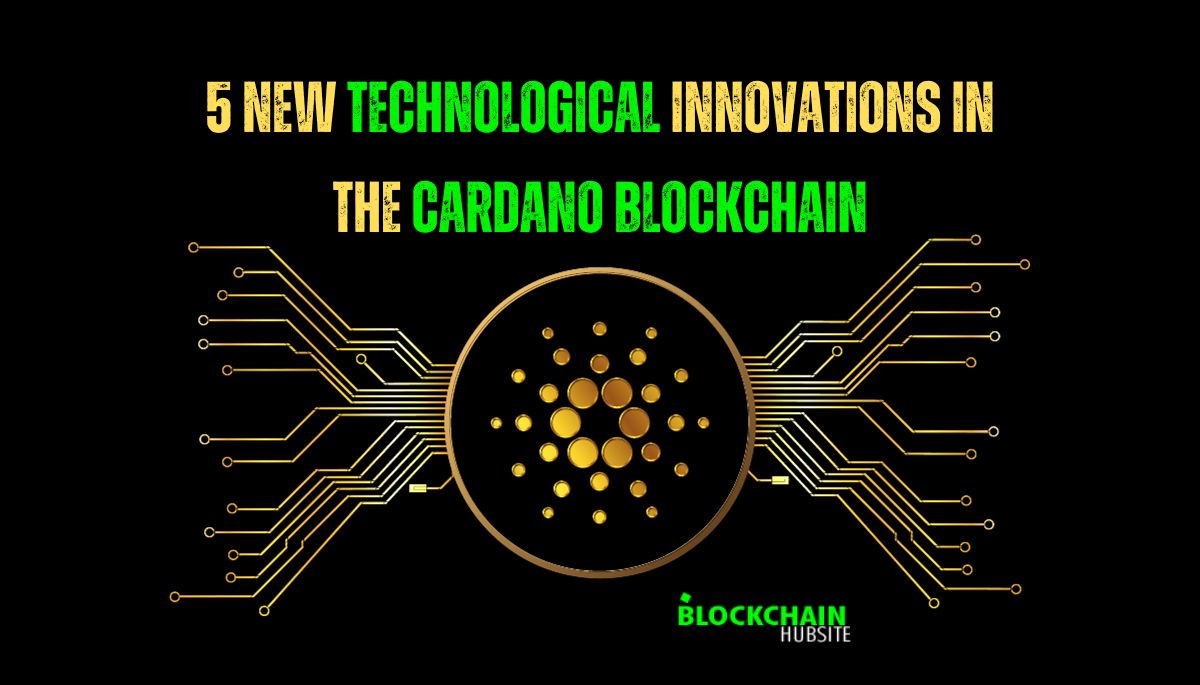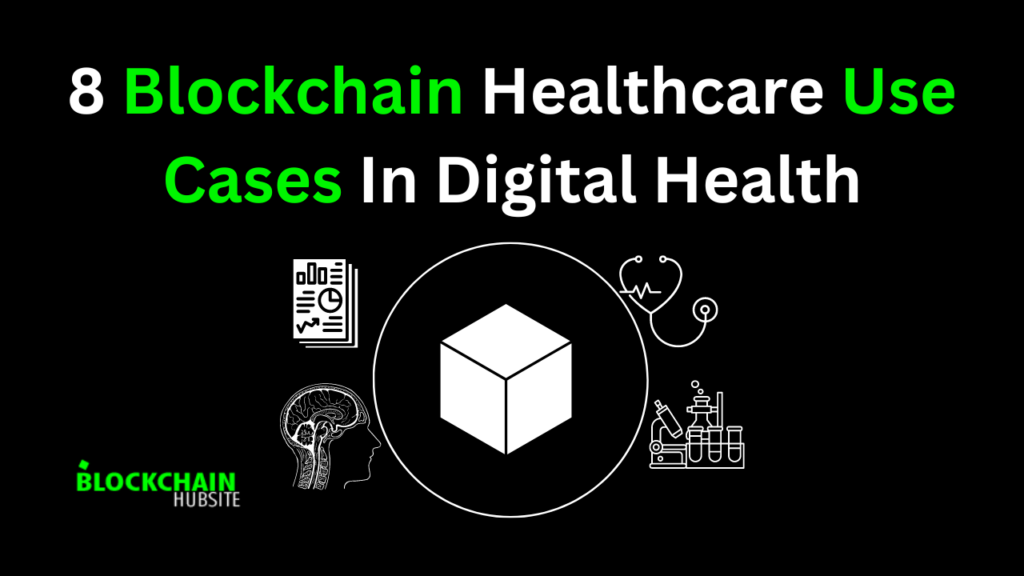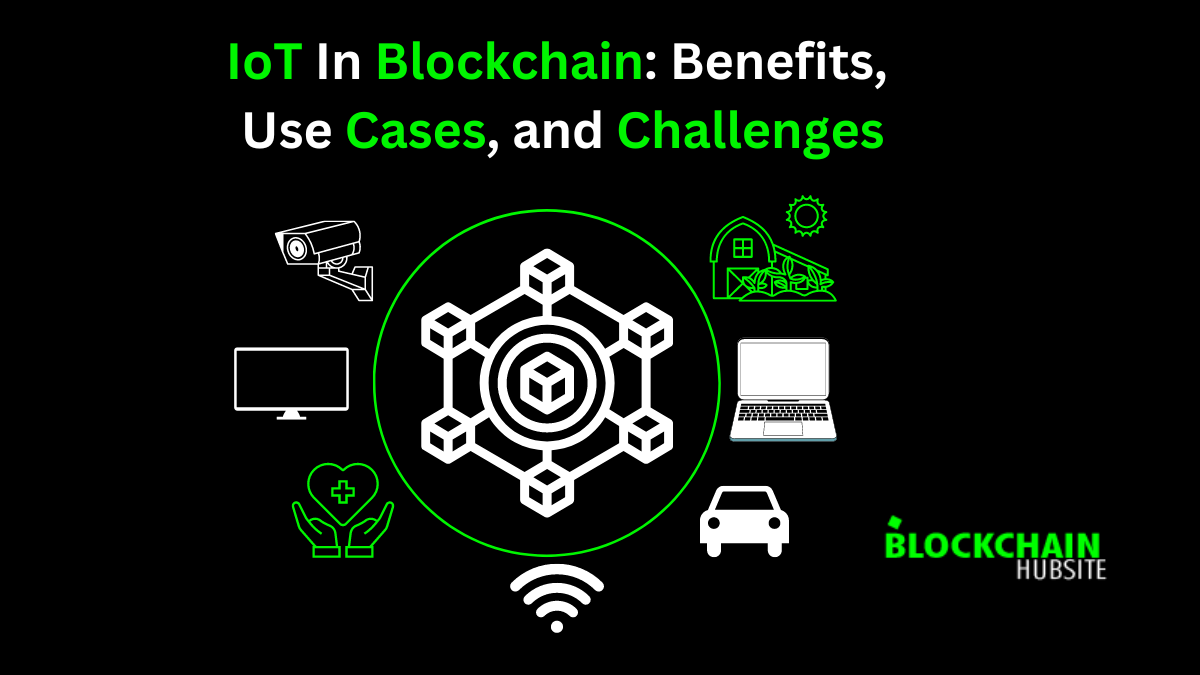
Table of Contents
The Internet of Things (IoT) has expanded internet connectivity beyond computers and people, including most objects in our environment. The Internet of Things (IoT) can link billions of objects simultaneously, improving the need for information sharing and our quality of life.
IoT systems currently in use are designed using a centralized server/client architecture, necessitating all devices’ connection and server-based authentication. This model might not be able to meet future IoT system expansion requirements. Moving the IoT system to a decentralized path may be the best option. Blockchain is one of the most popular decentralization platforms.
The next generation is increasingly interested in blockchain technology because of its remarkable adaptability to the digital world. We can use blockchain technology in the Internet of Things (IoT). The development of IoT technology across multiple areas has resulted in significant advancements in distributed systems. The blockchain concept needs a decentralized data management system for the network’s data and transactions to be shared and stored.
This article explains how blockchain improves IoT data security and how the two work together. We will also explore the main advantages and use cases for blockchain IoT technologies.
What is the IoT (Internet of Things)?
The internet of things (IoT) is a collection of technologies that use sensors and actuators to let us know how commonplace items like tools, vehicles, and even living things are. We can communicate with them through connectivity with cloud platforms, which receive and process data for later analysis. The data that has been analyzed is then used to make decisions.

How does IoT work?

Devices and things with built-in sensor systems are linked to an Internet of Things platform, which combines data from various equipment and uses data analysis to share the most vital information with applications developed for particular needs.
These robust IoT platforms can precisely identify helpful information that we can ignore safely. With the help of this data, we can observe patterns, make suggestions, and find potential issues early on.
For instance, if you run a car manufacturing company, you might be interested in learning which add-ons are the most popular (like leather seats or alloy wheels). You can do the following with Internet of Things technology:
- You can utilize sensors to determine which showroom spaces are the busiest and where clients stay in place the long time;
- You can analyze the available sales data in-depth to determine which components are selling the quickest;
- You can automatically match supply and sales data to ensure that in-demand items are available.
- The data collected by connected devices allow you to make better decisions about which components to restock on, saving you time and money.
Advanced analytics allow you to improve processes through the insight they provide. Thanks to smart systems and objects, you can automate some tasks, especially if they’re time-consuming, tedious, repetitive, or even risky.
What is blockchain?
A blockchain is a decentralized database of records containing all of the transactions carried out and distributed among users in the network. This type of distributed database is known as a distributed ledger. Most network users must agree to verify each transaction before it can be recorded in the distributed ledger. The blockchain contains all transaction records that have ever occurred.
How does the combination of IoT and blockchain work?
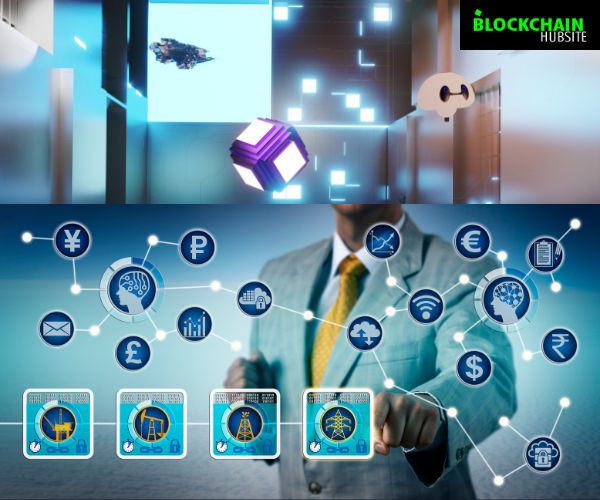
The Internet of Things (IoT) is a unique system still in development and offers numerous benefits. But the current centralized IoT architecture, in which all devices are noted, authenticated, and connected through centralized servers, has many defects. For many years, this model was used to connect a variety of computing devices, and it will keep supporting small-scale IoT networks, but it won’t be able to meet future demands to expand the IoT system.
| Items | Blockchain | IoT |
|---|---|---|
| Privacy | Ensure that the participating nodes’ privacy is protected. | unsatisfactory privacy |
| Bandwidth | High bandwidth utilization | The bandwidth and resources available to IoT devices are limited. |
| System Structure | Decentralized | Centralized |
| Scalability | scaling issues with an extensive network | There are a lot of devices on the Internet of Things. |
| Resources | Resource consuming | Resource restricted |
| Latency | Block mining takes a lot of time. | Low latency requirements |
| Security | Has better security | Security is an issue |
Both technologies have numerous advantages that can be combined to produce a better result.
The Internet of Things has endless benefits, and using a decentralized approach to IoT would solve many problems, particularly security. Adopting a standardized peer-to-peer communication model to handle the hundreds of billions of device-to-device transactions will significantly lower the costs of creating and maintaining large centralized data centers. It will distribute computation and storage needs across the trillions of devices that make up IoT networks. This will stop a network from collapsing entirely if just one node fails.
The blockchain is ideally suited to serve as the core technology behind IoT solutions due to its decentralized, independent, and trustless characteristics. It is not strange that enterprise IoT technologies are among the first to adopt blockchain technology. However, creating peer-to-peer communications will have its difficulties, particularly security. Protecting sensitive data is only one aspect of IoT security. Blockchain solutions must maintain privacy and security in IoT networks and use participant validation and consent for transactions to stop scamming and robbery.
Blockchain technology is regarded as one of the primary solutions to the IoT’s privacy and reliability problems. We can use it to monitor billions of connected devices, allowing for the processing of transactions and device coordination, which allows for significant cost savings for IoT industry manufacturers. Additionally, by removing single points of failure, this decentralized strategy would make the platform on which devices run more robust. Blockchains’ cryptographic algorithms would make customer information more private.
A blockchain-based IoT network can maintain an unchangeable record of smart device history. This feature allows smart devices to function independently by removing the need for centralized control.
The blockchain will thus enable many IoT scenarios that were challenging or even impossible to implement before. For instance, IoT solutions can enable secure, trustless messaging between devices in an IoT network by utilizing blockchain technology. In this model, the blockchain will handle message exchanges between devices in a manner similar to how money is exchanged in a bitcoin network. Devices will use smart contracts to allow message exchanges, which will model the contract between the two parties.
The ability to maintain a properly decentralized, trusted ledger of all transactions occurring in a network is one of the most exciting features of the blockchain. This capability is necessary without relying on a centralized model to enable the numerous compliances and regulatory requirements of industrial IoT (IIoT) applications.
To fully utilize the benefits of the blockchain, many large organizations have begun to implement it with IoT systems. For instance, IBM and Samsung have created a platform called ADEPT (Autonomous Decentralized Peer-To-Peer Telemetry) that draws inspiration from the fundamental architecture of bitcoin to create a distributed network of devices or decentralized Internet of Things.
The platform of ADEPT makes use of three protocols BitTorrent (for file sharing), Ethereum (for smart contracts), and TeleHash (for peer-to-peer messaging).
Benefits of blockchain in IoT
There are many advantages of combining blockchain and IoT.

Publicity
Since each participant has a separate ledger, everyone can see every transaction and every block. The participant’s private key protects the transaction’s content, making it impossible for anyone to view it. The Internet of Things (IoT) is a dynamic system allowing all connected devices to exchange information while preserving consumer privacy.
Decentralization
Most users must validate transactions before they can be approved and added to the distributed ledger. No centralized authority can approve transactions or establish specific guidelines for transaction acceptance.
As a result, a significant amount of trust is involved because most network participants must agree to validate transactions. Consequently, the blockchain will offer an IoT device secure platform. Moreover, the current centralized IoT architecture’s centralized traffic flows and single point of failure should be removed.
Resilience
Every node has a copy of the ledger that records every transaction that has ever taken place in the network. Therefore, the blockchain is more resistant to attack. The blockchain would still be kept up by all other nodes even if one were disrupted. It will be easier to share information if each node in the IoT has a copy of the data. It does, however, raise new processing and storage issues.
Security
With so many different types of devices in the Internet of Things, it is necessary to have a secure network over untrusted parties. Blockchain technology can do this. In other words, an attack on an IoT network can only be carried out by malicious nodes.
Speed
The blockchain network distributes a transaction within minutes and can be processed at any time of day.
Cost-saving
The high infrastructure and maintenance costs associated with centralized architecture, big server farms, and networking equipment make IoT solutions expensive. When there are tens of billions of IoT devices, the total amount of communications we have to handle will significantly increase those costs.
Immutability
One of the key benefits of blockchain technology is having an immutable ledger.
Most network nodes must certify any changes to the distributed ledger before making them. The transactions cannot thus be easily changed or deleted.
The security and privacy issues are this technology’s main drawbacks; all new technologies will be improved by having an immutable ledger for IoT data.
Anonymity
To complete the transaction, the buyer and seller use a private, anonymous address number. Because it encourages the use of cryptocurrencies in the illegitimate online market, this feature has drawn criticism.
However, it might benefit other things, like electoral voting systems.
Challenges encountered while implementing blockchain in IoT
Combining blockchain would provide numerous benefits. However, blockchain technology could be a better model and has some drawbacks and difficulties of its own. Following is a list of these difficulties:

Scalability
Blockchain scalability issues could result in centralization, a problem for the cryptocurrency’s future. As the network’s nodes increase in number, the blockchain scales poorly. This is a severe issue because IoT networks are expected to have many nodes.
Processing Power and Time
Encryption for all the objects in a blockchain-based ecosystem requires a lot of processing power and time.
Not all IoT devices will be able to run the same encryption algorithms at the required speed because they have very different computing capabilities.
Storage
Although blockchain eliminates the need for a central server to store transactions and device IDs, the ledger must be stored on the nodes. As time passes and more nodes are in the network, the distributed ledger will grow in size. That is beyond the capacity of many smart devices, such as sensors, with a minimum storage capacity.
Lack of Skills
Blockchain technology is still in its early stages. Consequently, a few people, particularly in the banking industry, have extensive knowledge and skills about blockchain. There needs to be more knowledgeable about how the blockchain operates in other applications. Because IoT devices are everywhere, adopting the blockchain with IoT will be extremely difficult without public awareness.
Legal and Compliance Issues
The blockchain is a novel technology that connects individuals from various nations without requiring them to subscribe to legal or compliance standards. This presents a significant problem for both manufacturers and service providers. This issue will be the greatest obstacle to the adoption of blockchain in many industries and applications.
Naming and Discovery
Because blockchain technology was not designed for IoT, nodes in the network were not supposed to find each other. The Bitcoin application is one example in which some “senders” IP addresses are incorporated within the Bitcoin client and used by nodes to construct the network topology.
This strategy won’t work for the Internet of Things because IoT devices constantly move, which changes the topology continuously.
Top use cases of IoT-enabled blockchain technology
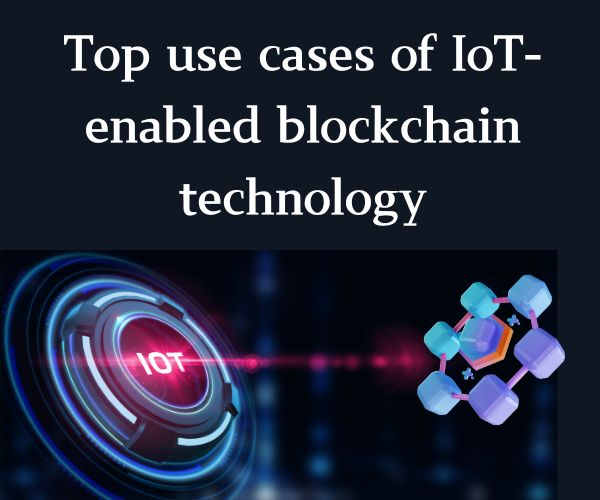
The Internet of Things improves security and transparency in IoT ecosystems. Let’s look at some blockchain IoT use cases to see how this powerful and effective combination of technologies can open new doors for businesses and consumers.
1. Smart Appliances and Homes
Every day, smart devices, appliances, and buildings that connect to the internet are being developed. It is possible to store all the data collected by smart devices in a blockchain rather than centralized storage such as the cloud.
Blockchain ensures the integrity and security of data. The data can be used for other things, like reducing energy consumption without being connected to a particular device or owner. The identity of the data is kept secret while maintaining its authenticity using cryptographic keys.
2. Logistics and Supply Chain
Delivery delays are among the most challenging problems in the supply chain and logistics sector because a supply chain network involves many stakeholders. This is the point at which Blockchain and the Internet of Things enter the equation.
While IoT-enabled devices will let businesses monitor the progress of shipments at every stage, blockchain will make the transaction completely transparent. IoT sensors, such as temperature, motion, and GPS sensors, can provide information about the status of shipments.
3. Automobile Industry
The automotive sector has adopted blockchain technology to get the most out of IoT. Vehicle parts and vehicles have been tracked throughout the supply chain using IoT and blockchain.
The details gathered include the manufacturer’s name, the making time, and the place. IoT sensors are used to gather the data, which is then recorded in immutable, open-source ledgers built on the blockchain. Stakeholders, including the manufacturer, service provider, and customers, can monitor and confirm parts information.
4. Insurance
Blockchain and Internet of Things adoption will significantly transform the insurance sector. For instance, fitness wearables gather information on a user’s diet, activity level, heart rate, blood pressure, and other vital signs. Private blockchains store the data; these platforms are secure and unchangeable. With the help of the data, the health insurance provider can evaluate the state of its customers’ health and choose what premiums to charge.
Monitoring systems like security cameras and smart locks are installed in smart homes to improve security and lower the risk of break-ins. This lowers the volume of burglary-related claims. Insurance providers can also use blockchain data to validate claims and lower the number of fake claims.
5. Agriculture

As the population grows, we have to produce more food to meet demand while maintaining the following:
- lowering of environmental impact
- A transparent supply chain
- By integrating blockchain and IoT, the food production industry could be completely transformed, from the farm to the grocery store to the home.
- Installing farm IoT sensors and sending data directly to the blockchain can improve the food supply chain.
6. Pharmaceutical Industry
One of the biggest problems facing the pharmaceutical industry is the increased rate of fake medications. The blockchain IoT has provided a way for the pharmacy sector to address this problem. Thanks to Blockchain IoT, all parties involved in drug manufacturing can now update the Blockchain network in real time with pertinent data.
7. Energy
Energy and building management are two areas where IoT has already been shown to be helpful. Devices that use IoT and blockchain can upload real-time data and provide extra energy to the power system, cutting waste in the process.
IoT and blockchain convergence have been used to raise energy efficiency in Brooklyn. Through microgrids, nearby residents can trade solar energy with one another. The grids use smart meters to make these transactions possible. These smart meters connect to form a blockchain over a peer-to-peer network.
Final Thoughts
Combining IoT and blockchain technologies can transform many industries, including healthcare, supply chain management, and energy management. IoT devices produce a significant amount of data, which can be shared and safely stored using blockchain technology. Blockchain’s immutability and transparency can help improve the trust and reliability of IoT systems.
While integrating blockchain with IoT has many benefits and can solve many IoT problems, it also creates new difficulties we must resolve. More research is needed to investigate blockchain implementation with IoT in depth.
FAQs
1. What are the constraints and challenges for usage of blockchain in IoT environment?
Several constraints and challenges to using blockchain in an IoT environment include scalability, security, interoperability, energy consumption, and cost.
2. Why blockchain is the future of Internet?
Blockchain is the internet’s future because it provides secure, decentralized, and transparent transactions that eliminate the need for intermediaries, allowing for increased efficiency, security, and trust in online transactions.
3. What are the future uses of blockchain technology?
4. What is the IoT value chain and why is it important?
The IoT value chain includes all stages involved in developing, deploying, and managing IoT devices, applications, and services. And it is significant because it aids in identifying the various players, their roles, and the value they bring to the IoT ecosystem, allowing for better collaboration and innovation.
5. What is the weakness of IoT?
The weaknesses of IoT include security vulnerabilities, lack of interoperability among devices and platforms, privacy concerns, and scalability issues, which can limit its adoption and effectiveness in some use cases.

